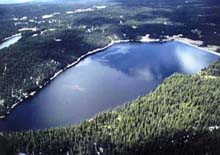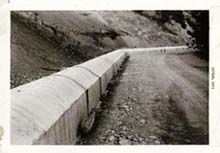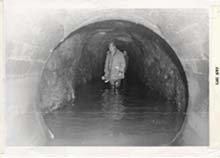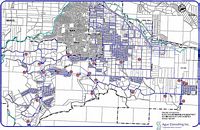Intro to the BMID
The Black Mountain Irrigation District (BMID) is an improvement district operating within the Central Okanagan Regional District. A large portion of our service area falls within the City of Kelowna boundaries. The Scotty Creek subdivision area that we service located north and east of the airport lies within the Regional District of Central Okanagan. Our primary water sources are the Mission Creek and Scotty Creek watersheds.
BMID is the largest improvement district in the Province. As of December 2023 we service a population of approximately 28,000. We serve approximately 7,000 Single Family Dwellings and 2,200 Mutli-Family Units. We have nearly 10,000 total connections comprised of residential, agricultural, commercial, industrial and institutional properties.
Our agricultural connections irrigate lands in the the Belgo, McKenzie and Ellison areas of Kelowna. We have three grades of agricutural land (residential lots under .5 acres are not included in this listing):
- 5,218 acres of Grade A land. Grade A land has rights to water and uses it;
- 1,049 acres of Grade C land. Grade C land has rights to water but is presently not using water;
- 4,092 acres of Grade D land. Grade D (dry) land does not have rights to water;
- If water availability is determined, a regrade charge can be paid to purchase watering rights.
Our upper level water storage reservoirs include Belgo Reservoir, James Lake, Graystoke Lake and Fishhawk Reservoir. Mission Creek is the largest tributary to Okanagan Lake and is a very strong source of water for the District. The annual flow past our intake gates is 135,000 ML.
 Graystoke Reservoir and Dam
Graystoke Reservoir and Dam Conveyance Conduit
Conveyance ConduitThe conveyance conduit carries the water at a very flat grade along the Mission Creek canyon to a tunnel located on the shoulder of Black Knight Mountain. The 900 metre long tunnel carries the water into town maintaining the high elevation resulting in minimal pumping and very efficient distribution throughout our water system.

Black Knight Mtn Tunnel
The entire water supply system consists of:
- 600 square kilometers of watershed in Mission Creek and Scotty Creek basins;
- 4 large storage reservoirs and dams in the watershed;
- Two intakes on major creeks;
- 105 ML/day water treatment plant;
- Two large open holding reservoirs 200,000 m3 in size for balancing daily water demands;
- A new Ultra Violet (UV) Treatment Facility;
- 3 chlorination stations;
- 3 groundwater wells;
- 13 major pressure zones;
- 27 pressure reducing stations;
- 6 water pumping (booster) stations;
- 4 local storage reservoirs; and
- 175 kilometers of water distribution main.
These facilities and our offices are maintained and operated by our 20 staff members.
A map showing the boundary of BMID is shown below:
Improvement District Responsibilities
As an improvement district, BMID is an autonomous local government body responsible for providing water services for the benefits of our ratepayers. Improvement Districts were brought into existence by the Province through a Cabinet Order approved by the Lieutenant Governor in Council. The Lieutenant Governor approved the Letters Patent which includes the name of the District, its boundary, and the services it provides. BMID’s Letters Patent was signed on November 20, 1920.
The affairs of BMID are directed by five elected Trustees with one Trustee elected as Chairman by the group. Each trustee is elected for a three-year term by the eligible landowners of the district. The powers that are exercised by the Trustees include the ability to enact and enforce the district bylaws. These bylaws provide BMID with the ability to assess and collect taxes, to charge tolls for water use, to acquire, hold and dispose of lands, to borrow money, and to expropriate lands required to carry out its objectives. All bylaws must be approved by the Trustees, and subsequently filed or registered by the Inspector of Municipalities.
